Shaping Modern
Infrastructure with Precision
- Home
- MEP
Mechanical, Electrical, and Plumbing
At CANSCORP In House design and Execution team, we offer end-to-end MEP (Mechanical, Electrical, and Plumbing) solutions for various industries and projects. We focus on providing energy-efficient, innovative, and reliable services catering to modern construction needs.
With years of expertise, we ensure every project is executed precisely and tailored to meet client requirements. We prioritize safety, sustainability, and quality from design to delivery in every step.
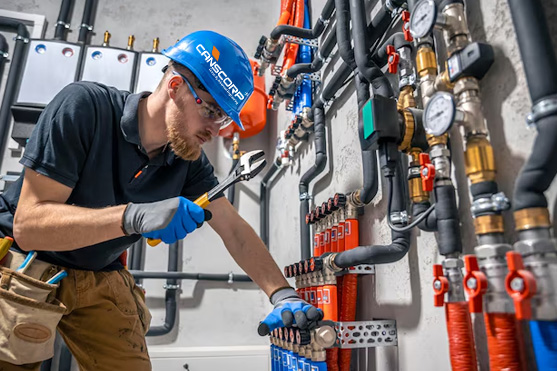
MEP Contracting Process
The MEP (Mechanical, Electrical, and Plumbing) contracting process involves coordinating, designing, installing, and maintaining mechanical, electrical, and plumbing systems in construction projects. It typically includes pre-construction planning, procurement of materials, system installation, and post-installation testing to ensure compliance with industry standards and client requirements. Effective project management and collaboration among engineers, contractors, and stakeholders are key to ensuring timely and efficient project completion.
Mechanical Services
The Mechanical, Electrical, and Plumbing (MEP) contracting process involves the design, installation, and maintenance of essential systems that ensure the operational efficiency and safety of a building. The mechanical systems are a crucial part of the overall MEP scope, and they typically include heating, ventilation, air conditioning (HVAC), fire protection, and other related systems.
- Heating, Ventilation, and Air Conditioning (HVAC) systems designed for optimal performance and energy efficiency.
- Installation and maintenance of chillers, boilers, and other essential systems.
- Customized solutions for clean rooms, industrial spaces, and commercial buildings.

Electrical Services
The MEP (Mechanical, Electrical, and Plumbing) contracting process is critical to the successful completion of construction projects, involving coordination, design, installation, and maintenance of mechanical, electrical, and plumbing systems. This process is divided into several phases, each with its own set of tasks and considerations to ensure the project’s functionality, safety, and efficiency.
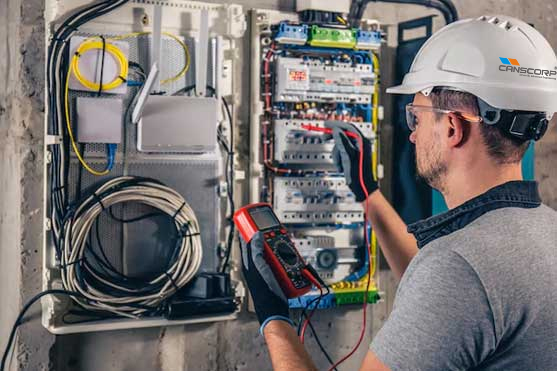
- In the MEP contracting process, the electrical system plays a crucial role in providing a reliable and safe power supply to the building.
- This involves the design, installation, and maintenance of electrical components such as wiring, power distribution, lighting systems, and circuit installations.
- Electrical contractors ensure the safe functioning of these systems, working closely with engineers to meet safety codes and industry standards, including proper load calculations, panel installations, and energy efficiency requirements.
- The electrical system is designed to ensure that the building’s infrastructure is equipped to handle the electrical needs of all occupants, from lighting to power outlets and heavy-duty machinery.
- Electrical contractors also perform troubleshooting during construction and post-construction phases to address any issues, ensuring long-term operational reliability.
Fire-Fighting System
In the MEP contracting process, the fire-fighting system includes several components to ensure comprehensive fire protection. These typically include
- Hydrant System: A network of water supply points (hydrants) for firefighting, providing access to water for firefighters during an emergency.
- Fire Hose Reel: A manually operated reel with a hose, located throughout the building for quick access to water in case of a fire.
- Sprinkler System: Automated systems that release water when heat from a fire is detected, helping to suppress flames.
- Fire Brigade Inlet (Siamese Connection): A connection point for the fire brigade to connect their hoses to the building’s water supply, enhancing firefighting capabilities.
- Fire Extinguishers: Portable devices to put out small fires before they spread.
- Fire Alarm System: Integrated alarms to alert occupants of a fire, ensuring timely evacuation.
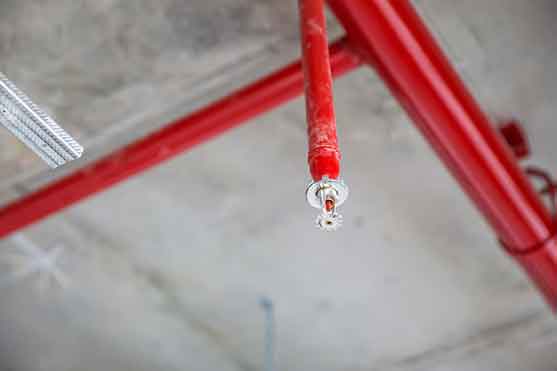
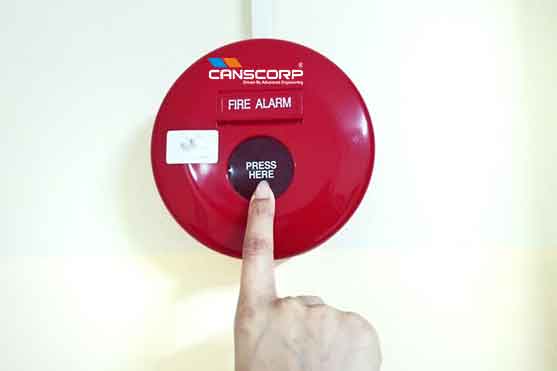
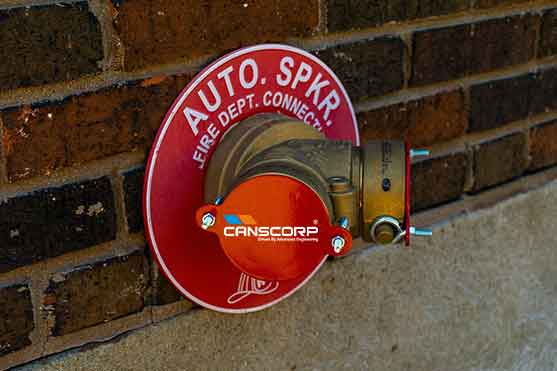
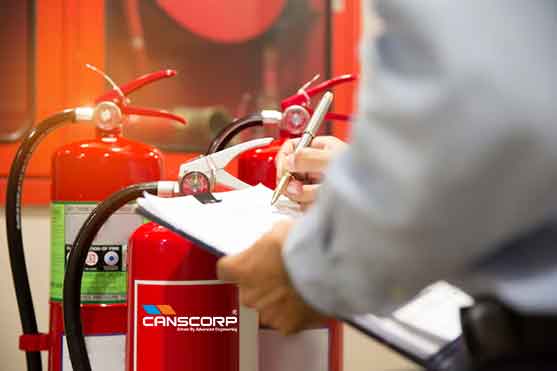
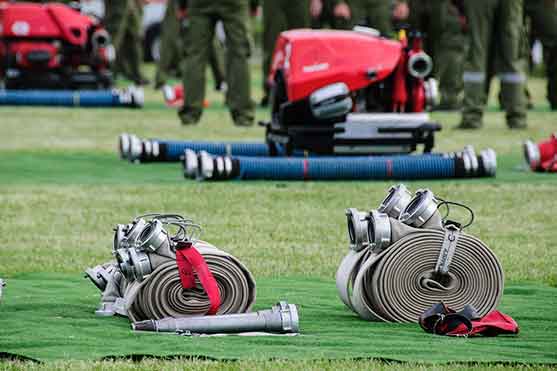
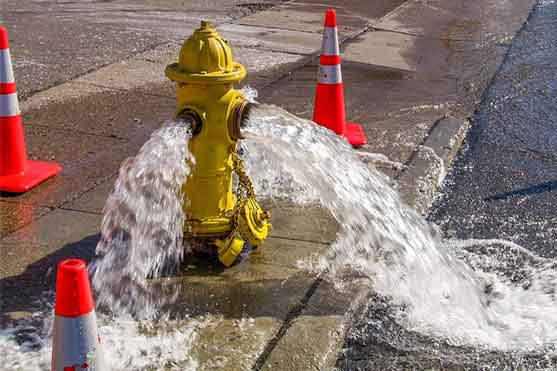
Plumbing System
- Water supply, drainage, and sanitation systems designed for efficiency and compliance.
- Installation of advanced water treatment and fire suppression systems.
- Maintenance services to ensure smooth operations and durability.

Heat Ventilation & Air-Conditioning System
In the MEP contracting process, the Heat Ventilation & Air-Conditioning (HVAC) system focuses on regulating indoor air quality, temperature, and humidity for comfort and safety. This includes:

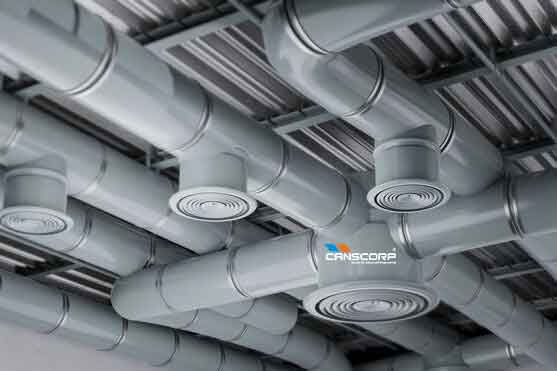
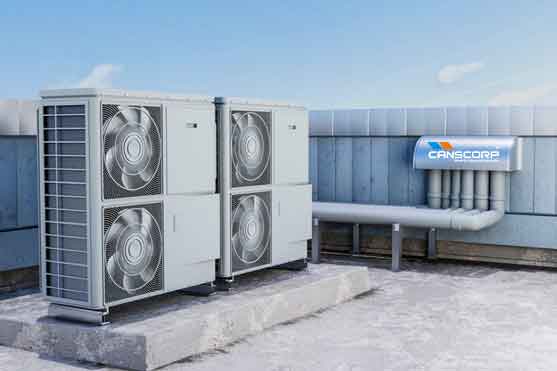
- Heating Systems: Boilers or heat pumps used to warm the building during colder months.
- Ventilation Fans: Fans that ensure proper air circulation and remove stale air.
- Control Systems: Thermostats and sensors used to monitor and regulate temperature, humidity, and airflow.
- Design & Installation: Contractors design the system to meet the building’s needs, ensuring energy efficiency and compliance with codes.
- Maintenance: Ongoing service to ensure the system operates effectively and efficiently over time.
STP, WTP, RO Plant
In the MEP contracting process, STP (Sewage Treatment Plant), WTP, (Water Treatment Plant), and RO Plant (Reverse Osmosis) systems are integral components of water management and treatment. Here’s a breakdown:
Sewage Treatment Plant (STP)
A Sewage Treatment Plant (STP) is an essential infrastructure designed to treat wastewater from residential, commercial, and industrial sources. Its primary purpose is to remove harmful contaminants and produce water that can be safely released into the environment or reused for non-potable applications like irrigation, cleaning, or industrial processes.
- Screening: Removal of large debris such as plastics, rags, and other solid waste.
- Grit Removal: Eliminates sand, gravel, and other heavy particles to protect downstream equipment.
- Sedimentation: Slows down the water flow to allow suspended solids to settle at the bottom, forming sludge, while lighter substances float on the surface as scum.
- Biological Treatment: Involves microorganisms that break down organic matter in the wastewater. Common methods include activated sludge, trickling filters, and sequencing batch reactors (SBR).
- Aeration: Ensures adequate oxygen supply for microbial activity to thrive.
- Filtration: Advanced filters remove finer particles, pathogens, and residual contaminants.
- Disinfection: Methods like chlorination, UV radiation, or ozone treatment eliminate harmful bacteria and viruses.
- The sludge from primary and secondary treatment undergoes dewatering and is treated for safe disposal, composting, or energy recovery.
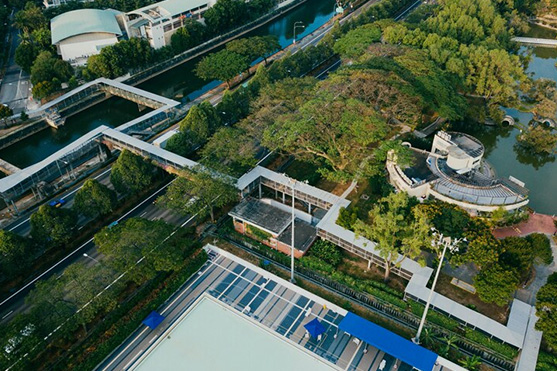
Environmental Protection: Prevents untreated sewage from polluting water bodies, maintaining ecological balance.
Water Conservation: Treated water can be reused for landscaping, agriculture, or industrial purposes, reducing the demand for freshwater.
Regulatory Compliance: Meets wastewater discharge standards set by government authorities.
Cost-Effective: Reduces reliance on external water sources and cuts costs associated with sewage disposal.
Residential Communities: Treating wastewater generated from housing societies, apartments, and townships.
Industrial Facilities: Managing effluents from factories, ensuring compliance with environmental norms.
Hotels and Resorts: Recycling wastewater for gardening, cooling systems, and flushing.
Hospitals: Ensuring safe disposal of contaminated water from medical facilities.
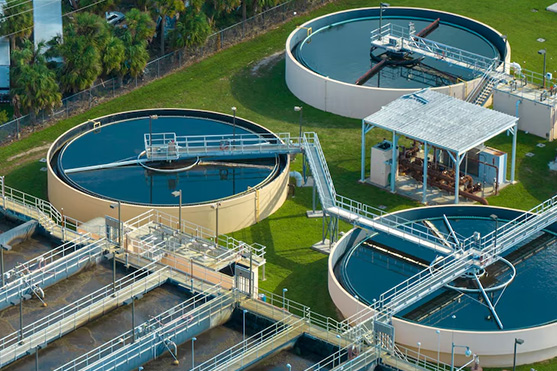
Safe Drinking Water: Eliminates harmful contaminants, making water safe for consumption.
Sustainability: Ensures efficient use of water resources by treating and reusing water for various purposes.
Health Protection: Prevents the spread of waterborne diseases like cholera, typhoid, and dysentery.
Environmental Impact: Reduces pollution by ensuring untreated water is not released into the environment.
A typical WTP operates through a series of processes designed to eliminate impurities and contaminants:
Intake and Screening:
- Raw water is drawn from its source and passed through screens to remove large debris like leaves, twigs, and other particles.
Coagulation and Flocculation:
- Coagulants (like alum) are added to water, causing fine particles to clump together into larger particles called flocs. This makes it easier to remove suspended solids.
Sedimentation:
- The flocs settle at the bottom of the tank, forming sludge, while the clear water is drawn off the top.
Filtration:
- The water passes through layers of sand, gravel, and charcoal to remove finer impurities, bacteria, and suspended particles.
Disinfection:
- Disinfectants like chlorine, ozone, or UV light are used to kill harmful microorganisms, ensuring the water is free from pathogens.
pH Adjustment:
- Chemicals are added to balance the water’s pH, making it non-corrosive and suitable for distribution or specific applications.
Storage and Distribution:
- The treated water is stored in reservoirs or tanks before being supplied to households, industries, or agricultural facilities.
Water Treatment Plant (WTP)
In Mechanical, Electrical, and Plumbing (MEP) solutions, Water Treatment Plants (WTPs) play a pivotal role in ensuring efficient water management systems for residential, commercial, and industrial projects. WTPs in MEP are integral to maintaining water quality standards, reducing wastage, and supporting sustainable operations within building services.
- Screening, coagulation, and flocculation to remove large particles and impurities.
- Multi-layered filtration systems using sand, activated carbon, and gravel to purify water.
- Removes excess hardness (calcium and magnesium) and dissolved salts to prevent scaling in plumbing and HVAC systems.
- Chlorination, UV sterilization, or ozone treatment eliminates bacteria, viruses, and other pathogens.
- Used for advanced purification, especially in industries requiring ultra-pure water.
- Treats wastewater for reuse in flushing, landscaping, and cooling tower systems.
Reverse Osmosis (RO)
A Reverse Osmosis (RO) Plant is a sophisticated water purification system that removes impurities, contaminants, and dissolved solids from water using Reverse Osmosis (RO) technology. RO plants are extensively used across residential, commercial, and industrial sectors to provide clean and safe water for various applications.
- Involves pushing water through a semi-permeable membrane under high pressure.
- Removes contaminants such as salts, heavy metals, bacteria, viruses, and other impurities.
- Pre-treatment to remove larger particles, sediments, and chlorine.
- High-pressure RO membrane filtration for fine purification.
- Post-treatment for additional sterilization or mineral balancing (if required).
- Can be tailored for varying capacities and water conditions (e.g., brackish water, seawater, or municipal water).
- Many modern RO plants are designed to maximize water recovery and minimize waste.

- High Efficiency: Removes up to 99% of dissolved solids and contaminants.
- Versatility: Suitable for treating water from various sources.
- Improved Taste: Eliminates bad taste and odor-causing substances.
- Scalability: Can be designed for small households to large industries.
1. Residential Use:
- Provides safe drinking water by removing harmful contaminants.
2. Commercial Use:
- Used in offices, schools, hospitals, and hotels to supply purified water.
3. Industrial Use:
- Produces high-purity water for manufacturing, pharmaceuticals, power plants, and food & beverage industries.
4. Desalination Plants:
- Converts seawater into potable water for regions with limited freshwater resources.
1. Raw Water Supply System
- Includes pumps and pipelines to transport water from the source.
2. Pre-Treatment System
- Sand Filters: Remove suspended solids.
- Carbon Filters: Eliminate chlorine and organic impurities.
- Softener (optional): Reduces water hardness.
3. High-Pressure Pump
- Boosts water pressure to overcome the osmotic pressure of the RO membrane.
4. RO Membrane
- The key component that separates pure water from contaminants.
5. Post-Treatment System
- UV sterilizer or ozone treatment to ensure microbiological safety.
- Re-mineralization (if required) to improve water taste and quality.
6. Control Panel
- Automates operation, monitors pressure, flow rate, and quality parameters.
7. Reject Water System
- Disposes of concentrated impurities and salts as wastewater.
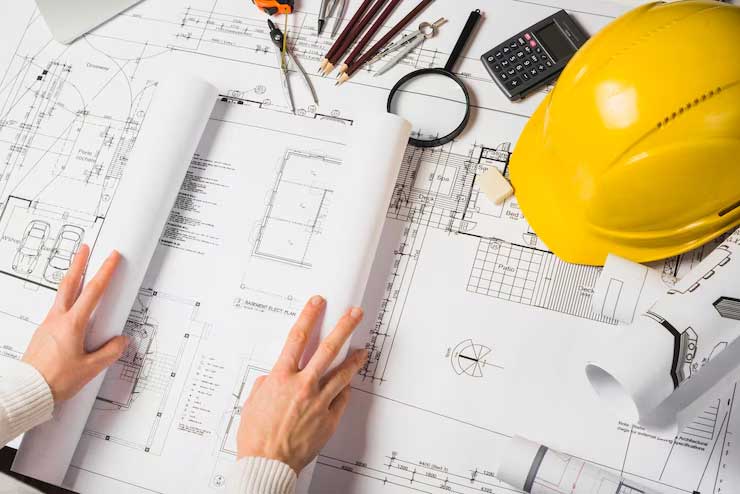
- Experienced Team: Our skilled professionals bring extensive knowledge and innovative ideas to every project.
- Customized Solutions: We provide tailored services to suit your unique project needs.
- Focus on Sustainability: We integrate energy-saving and environmentally friendly practices into all our solutions.
- Reliable Support: From initial consultation to post-installation maintenance, we’re here to support you every step of the way.
